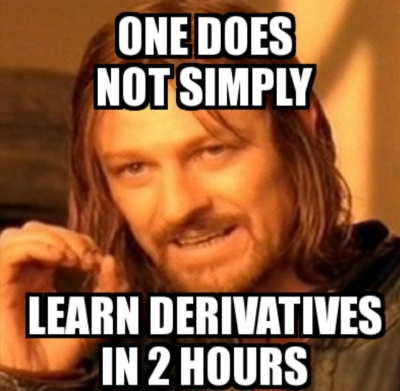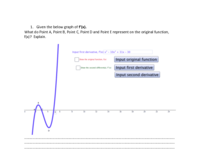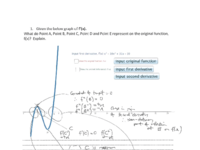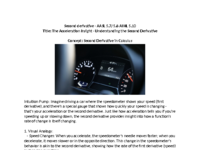Second derivative - AASL 5.7/5.8 AI HL 5.10
Keywords
| English | Japanese | Korean | Chinese Simplified |
| Second Derivative | 二次導関数 | 2차 도함수 | 二阶导数 |
| Concavity | 凹み | 오목함 | 凹性 |
| Inflection Points | 変曲点 | 변곡점 | 拐点 |
| Second Derivative Test | 二次導関数テスト | 2차 도함수 검정 | 二阶导数检验 |
| Local Maximum | 局所最大値 | 극대값 | 局部最大值 |
| Local Minimum | 局所最小値 | 극소값 | 局部最小值 |
| Polynomial Function | 多項式関数 | 다항 함수 | 多项式函数 |
| Maxima and Minima | 最大値と最小値 | 최대값과 최소값 | 极大值与极小值 |

Inquiry questions
| Factual Inquiry Questions | Conceptual Inquiry Questions | Debatable Inquiry Questions |
| What does the second derivative of a function represent? | Why is the sign of the second derivative critical in determining whether a point is a local maximum, local minimum, or an inflection point? | Is the analysis of second derivatives more significant in theoretical mathematics than in practical applications, or does it hold substantial practical value? |
| How is the second derivative test used to determine the concavity of a function and identify inflection points? | How can the concept of the second derivative enhance our understanding of a function's graph and its geometric properties? | Can the principles underlying second derivatives be effectively applied in fields outside of mathematics, such as economics or physics, to predict changes and trends? How? |
Scenario: The Great Calculus Coaster
Scenario: The Great Calculus Coaster
Background:
Welcome to Mathemagic Land, where the latest attraction is the Great Calculus Coaster! This thrilling roller coaster is designed based on the principles of calculus, with its path modeled by a polynomial function. The coaster's engineers use the second derivative to ensure the safety and excitement of the ride by identifying maximum and minimum points of the coaster's hills and valleys.
Objective:
As a junior roller coaster designer, your task is to use the applet provided to understand how the second derivative affects the design of the roller coaster's path and ensures a thrilling yet safe ride for all guests.
Investigation Steps:
1. Understanding the Function:
- Examine the original function that models the path of the roller coaster.
- Identify the points where the first derivative is zero to find potential maxima and minima.
2. Applying the Second Derivative Test:
- Use the second derivative to determine whether each point is a maximum or a minimum.
- Explain how the second derivative provides this information.
3. Designing for Thrills and Safety:
- Discuss how maxima and minima points contribute to the thrill of a roller coaster.
- Consider how these points also relate to the safety of the ride.
4. Presenting Your Findings:
- Create a presentation for the Mathemagic Land board of directors, showcasing how calculus ensures both the excitement and security of the Great Calculus Coaster.
Questions for Investigation:
1. Discovery Question:
- If you were to change the function of the coaster's path, how would that affect the location and nature of its maxima and minima?
2. Engineering Challenges:
- What are some potential design challenges you might face when applying calculus to roller coaster design?
4. Reflection:
- Reflect on the importance of calculus in engineering and design.
Differential_nature_of_points_questions
Differential_answers
Part 2 - Formalising findings and what it all means
It's also useful to know that your calculator has the ability to numerically find the derivative at a point on a graph, and also to plot the derivative.


![[MAA 5.5-5.6] MONOTONY AND CONCAVITY.pdf](https://stage.geogebra.org/resource/z4csvjyb/ri33zoZzmzpXNvzv/material-z4csvjyb-thumb.png)
![[MAA 5.5-5.6] MONOTONY AND CONCAVITY_solutions.pdf](https://stage.geogebra.org/resource/nsbgw4aj/sAjnZ7kdbBHF1jbS/material-nsbgw4aj-thumb.png)
